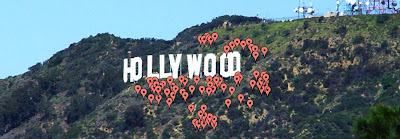
Normally, I start writing with an idea and then find an image to enhance it. Today is different. I came across an image that most of us should recognize. You know, the tabbed notices stapled to telephones imploring us to find a lost dog, a just cause or a new talent. Well, I found this image on
stock.xchng (a blogger's lifeline) and something about it told me this was a good analogy for something. Ok, besides lost memory. But close. It could symbolize a lot of things to a lot of people across a wide variety of industries but to me the video editor it made me think of one thing: orphaned media. One of the best things about Avid is its' rock-solid media management. When you import or capture anything into Avid Media Composer it is re-wrapped and indexed in an efficient database. If you use Avid's SAN solutions like
Unity or Isis then you'll need
Interplay as an even more robust way to interface and manage many terabytes of data. Final Cut Pro doesn't natively do this which may be why they decided to develop and release
Final Cut Server. A book that has been an absolute Avid Bible for me is my dog-eared copy of
The Avid Handbook by Greg Staten and Steve Bayes. It's definitely for Avid users that have been around the block and is full of "advanced techniques, strategies and survival information" as promised. Think of it as a more human technical manual. It's written in the first person and has such revolutionary things like diagrams, "air quotes" and a exclamation points for emphasis! I recently bought
Final Cut Pro Workflows by Jason Osder and Robbie Carman and hope that it will become dog-eared as well. What do you think of these books if you've read them?
The Avid Handbook is in its' fifth printing so somebody must use it.
FCP Workflows has 5 out of 5 glowing reviews on Amazon for whatever that's worth but so far I really like it. The book report will come after I'm done. But in the meantime whatever you do, save the orphans.
 For all of you considering a move to Los Angeles (or those already there) I've created a map of post facilities in LA county and surrounding areas using Google Maps and LA411.com. What you'll find as you look at the map is that there are 3 clusters of post: Santa Monica stretching down into Venice Beach, Hollywood and Burbank. I've plotted out over 225 facilities and all of the markers include a contact numbers and website link. I have vetted these as much as I can, trying not to include "bedroom boutiques" or any other company that is not big enough to hire for post. These are primarily editorial facilities that may or may not do VFX, animation, audio post or other services. Separate maps for other areas of post would be cool and of course maps of editorial facilities in other markets. Feel free to expand, correct or otherwise collaborate on this document.
For all of you considering a move to Los Angeles (or those already there) I've created a map of post facilities in LA county and surrounding areas using Google Maps and LA411.com. What you'll find as you look at the map is that there are 3 clusters of post: Santa Monica stretching down into Venice Beach, Hollywood and Burbank. I've plotted out over 225 facilities and all of the markers include a contact numbers and website link. I have vetted these as much as I can, trying not to include "bedroom boutiques" or any other company that is not big enough to hire for post. These are primarily editorial facilities that may or may not do VFX, animation, audio post or other services. Separate maps for other areas of post would be cool and of course maps of editorial facilities in other markets. Feel free to expand, correct or otherwise collaborate on this document.






